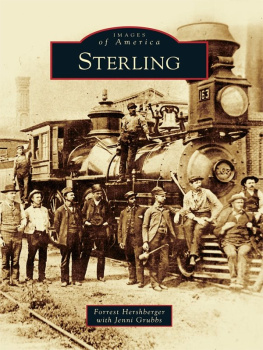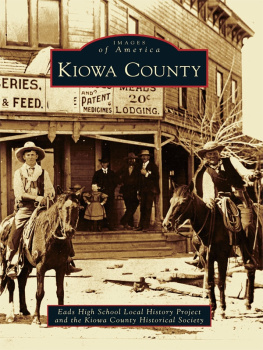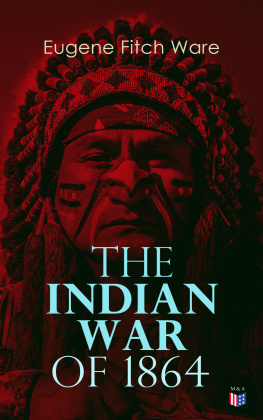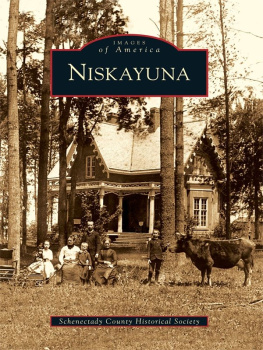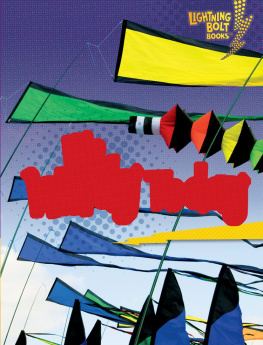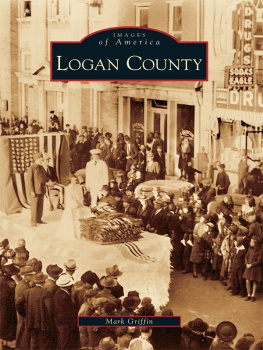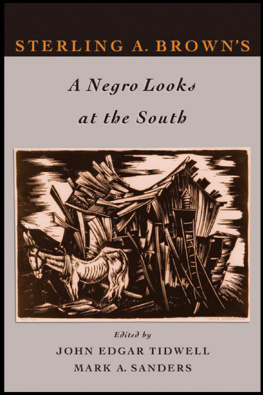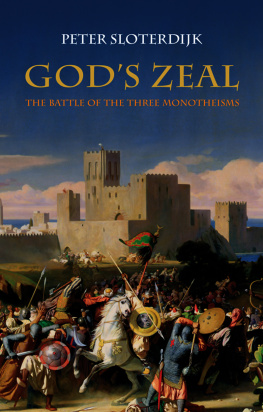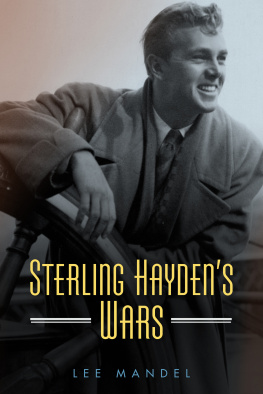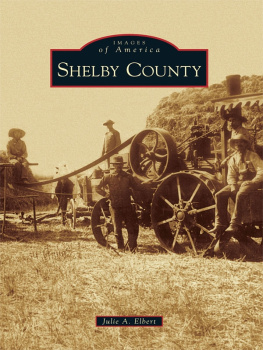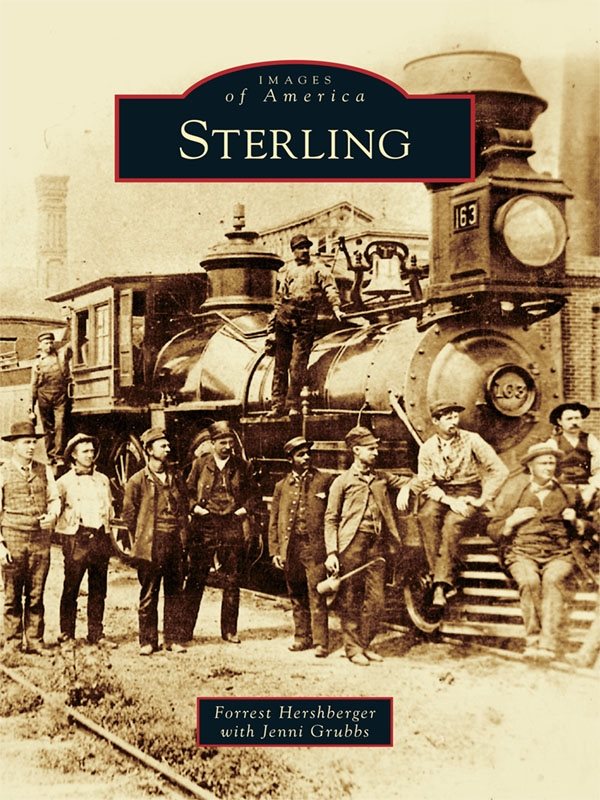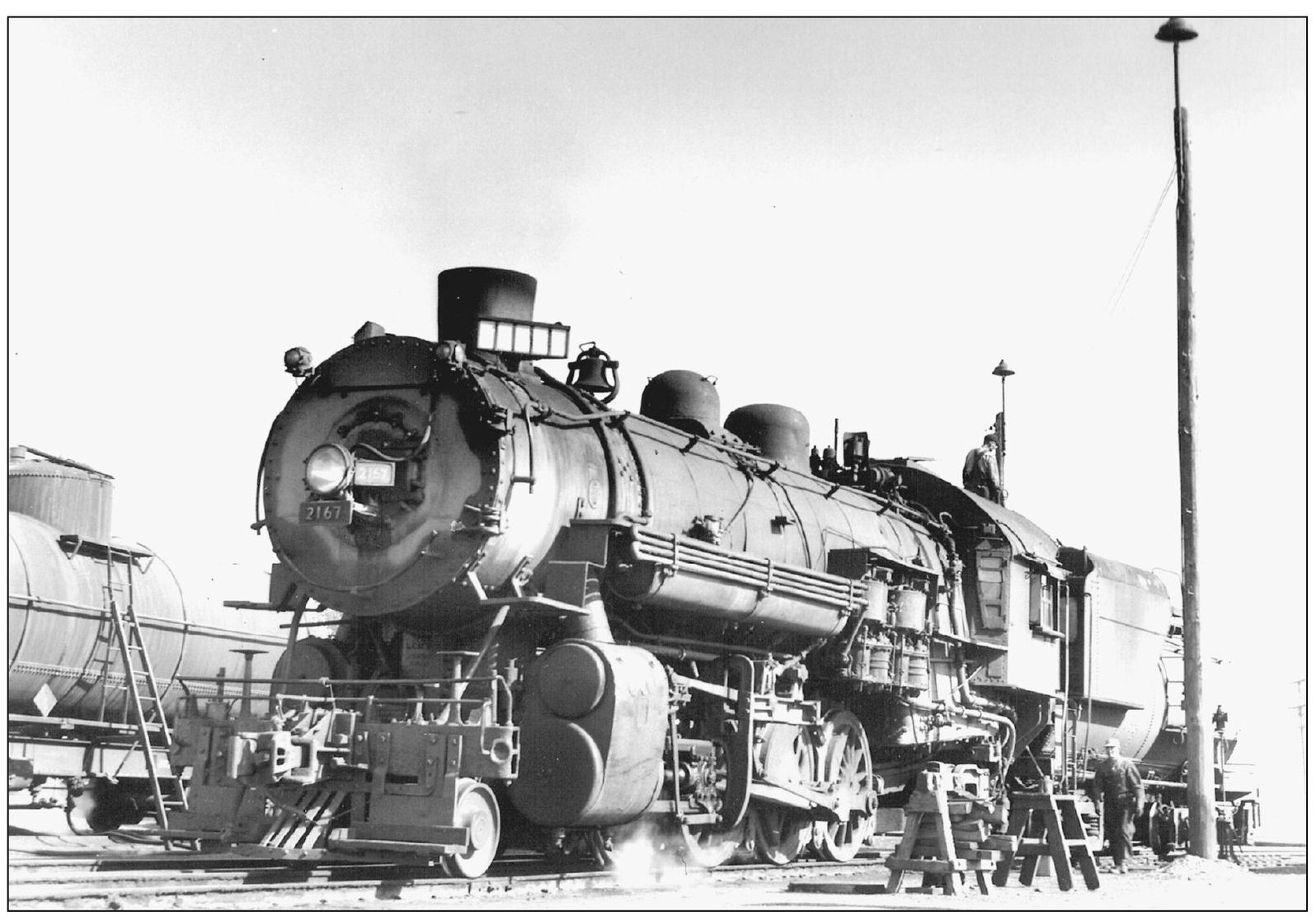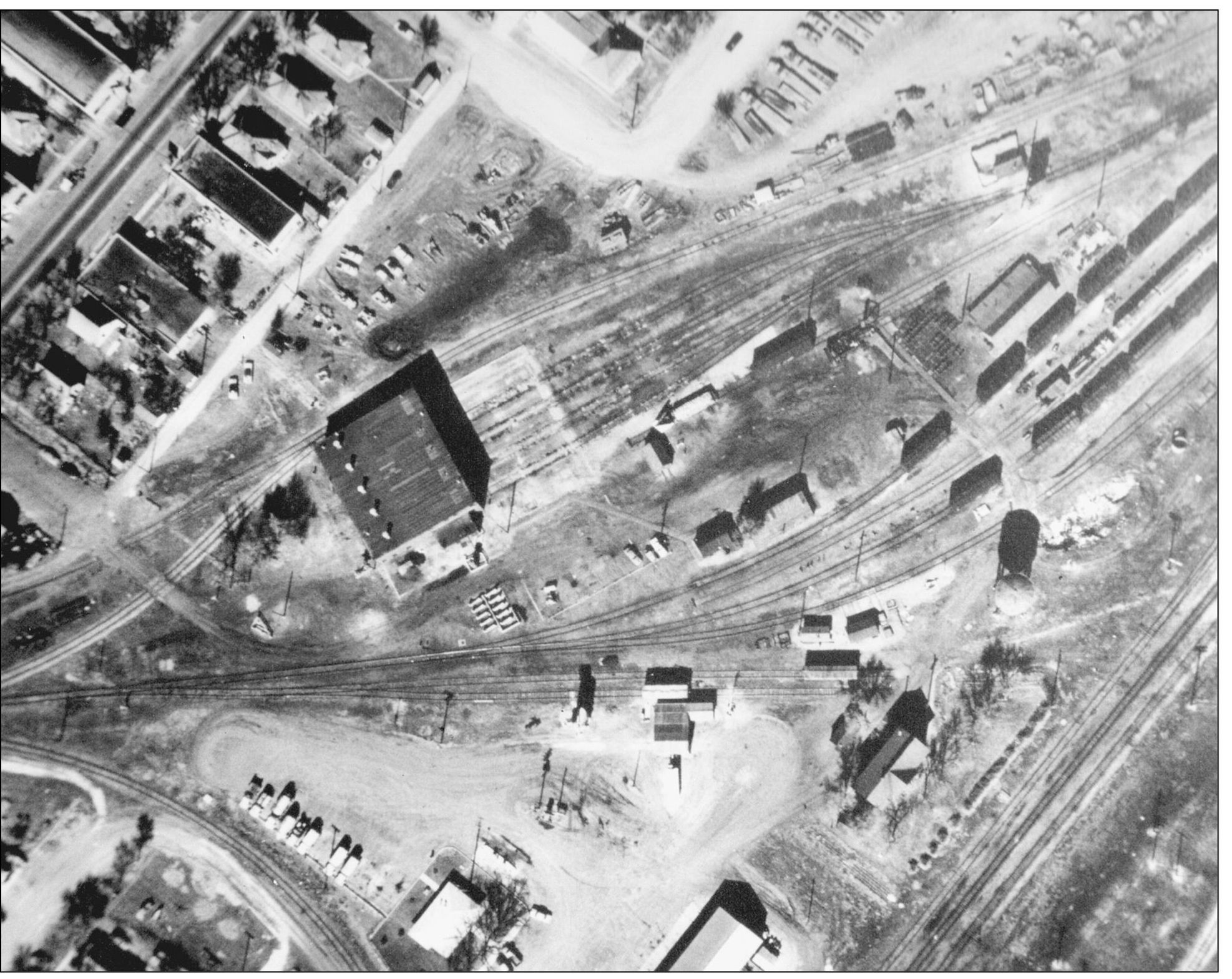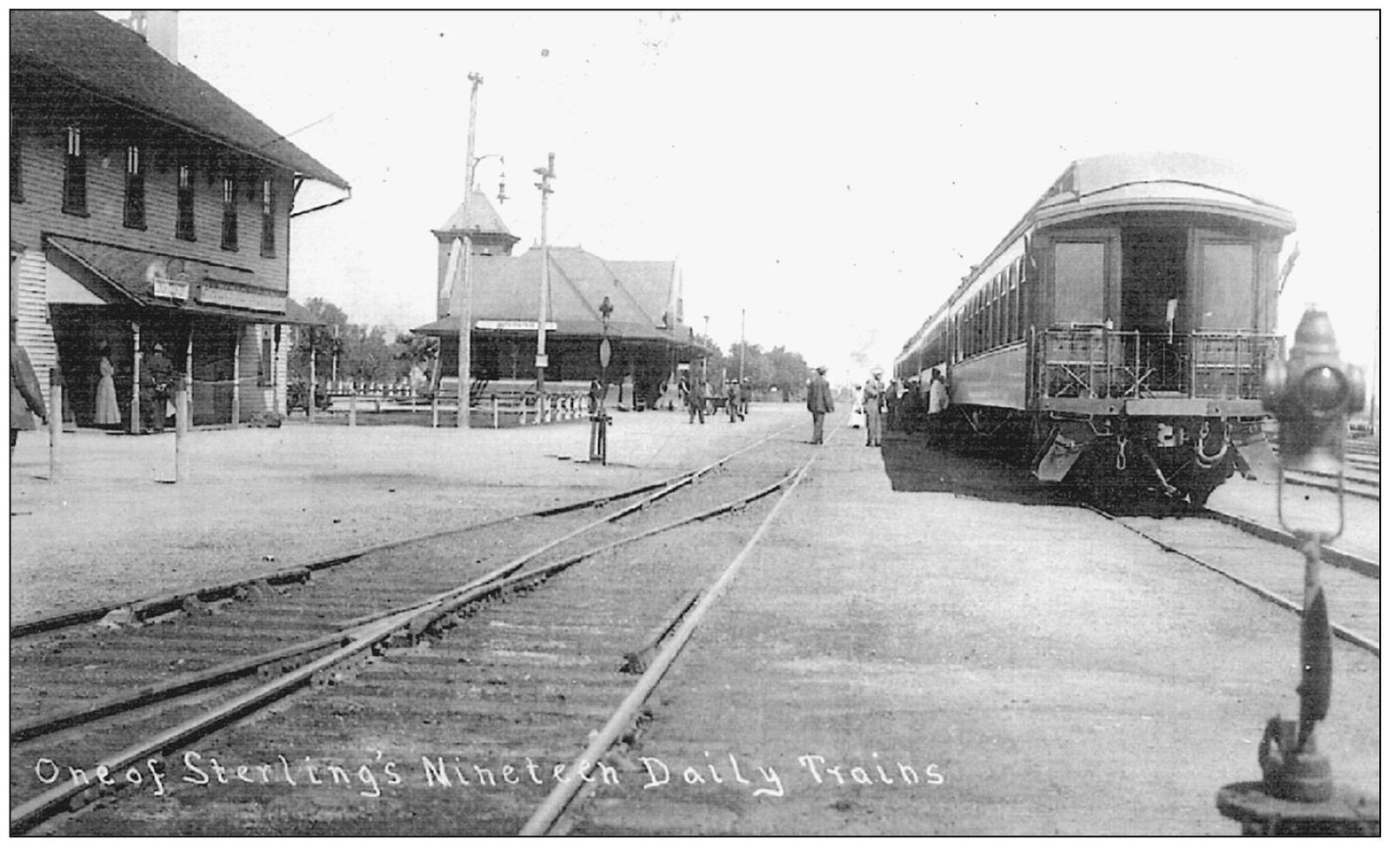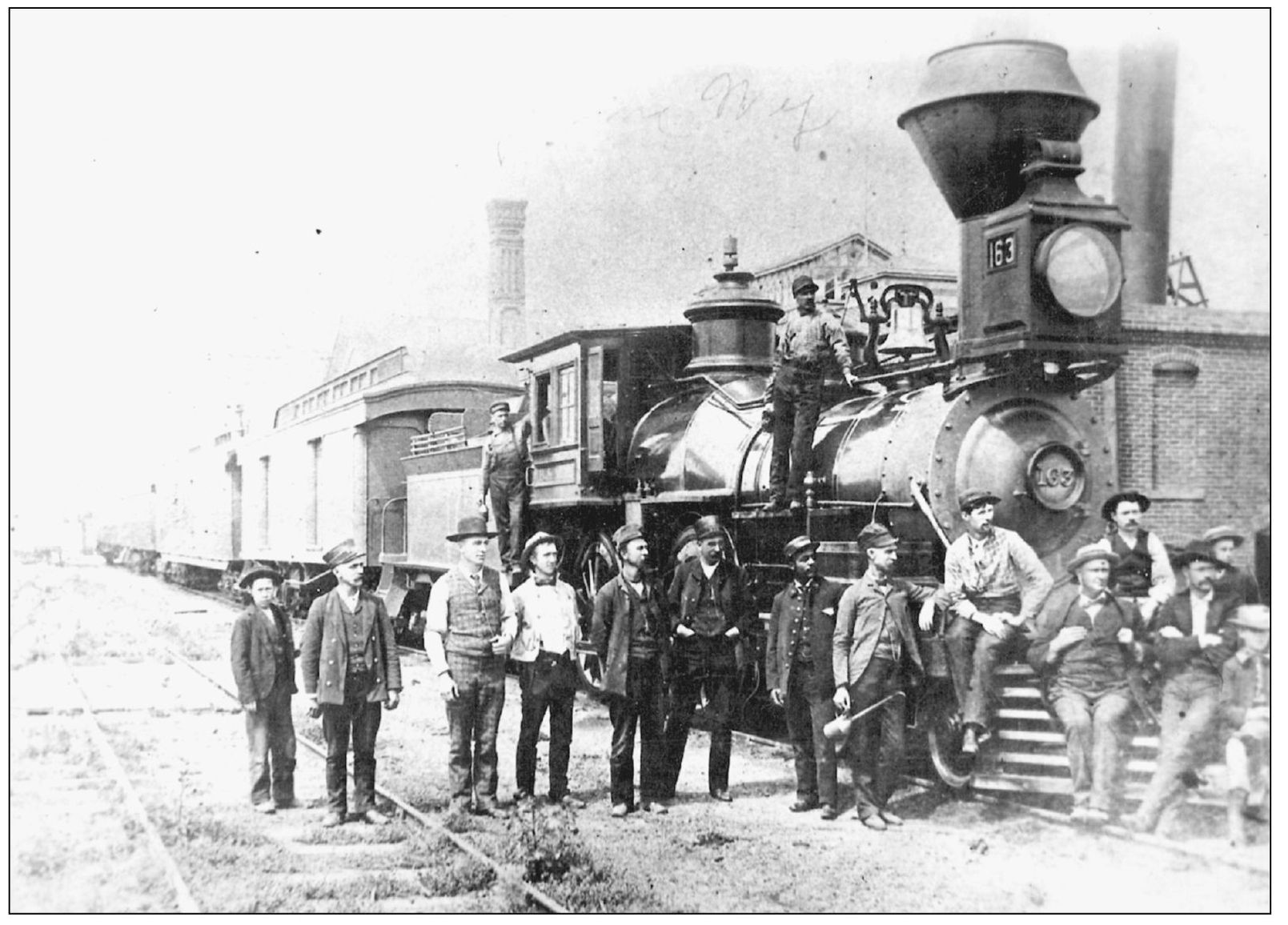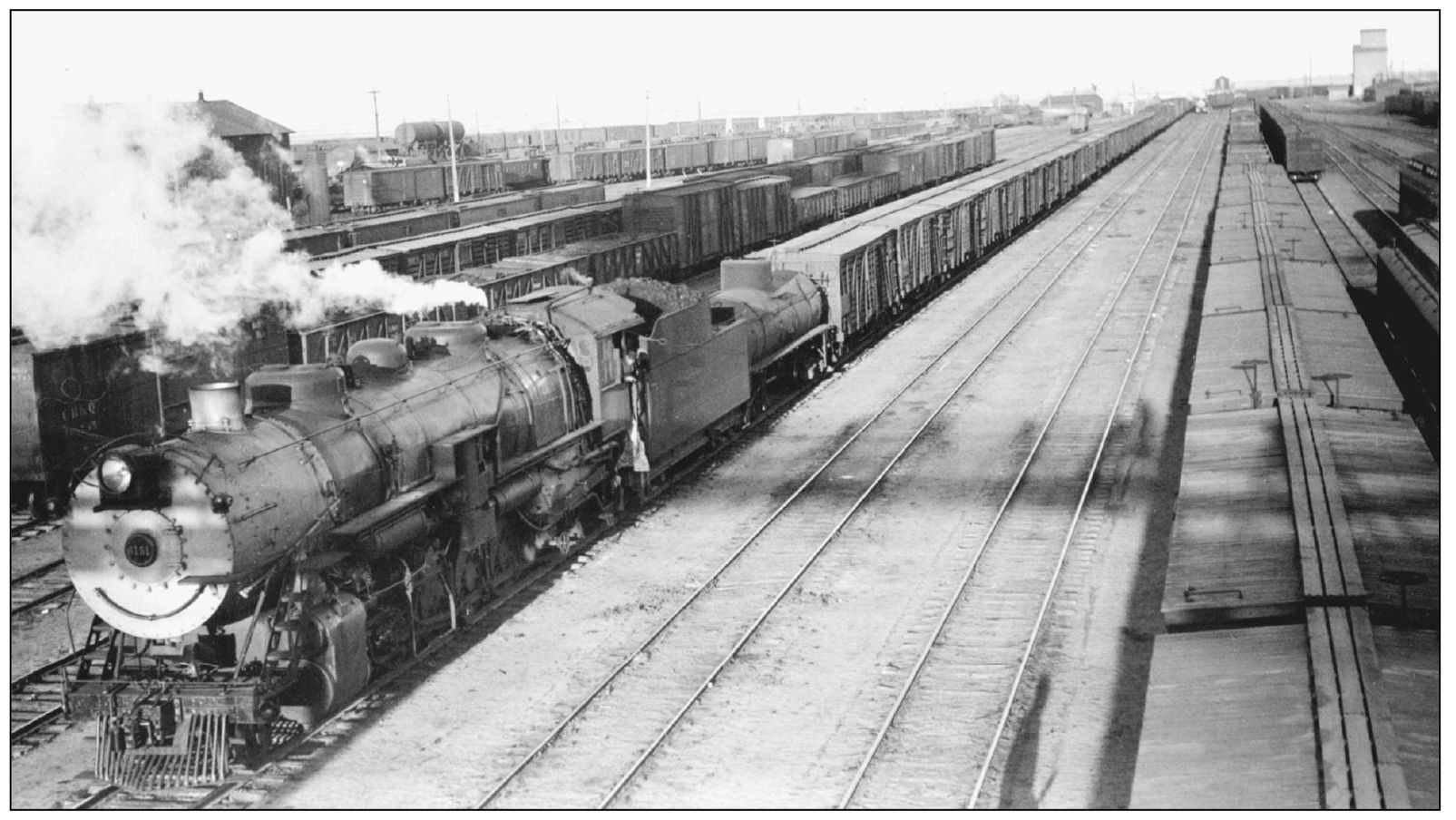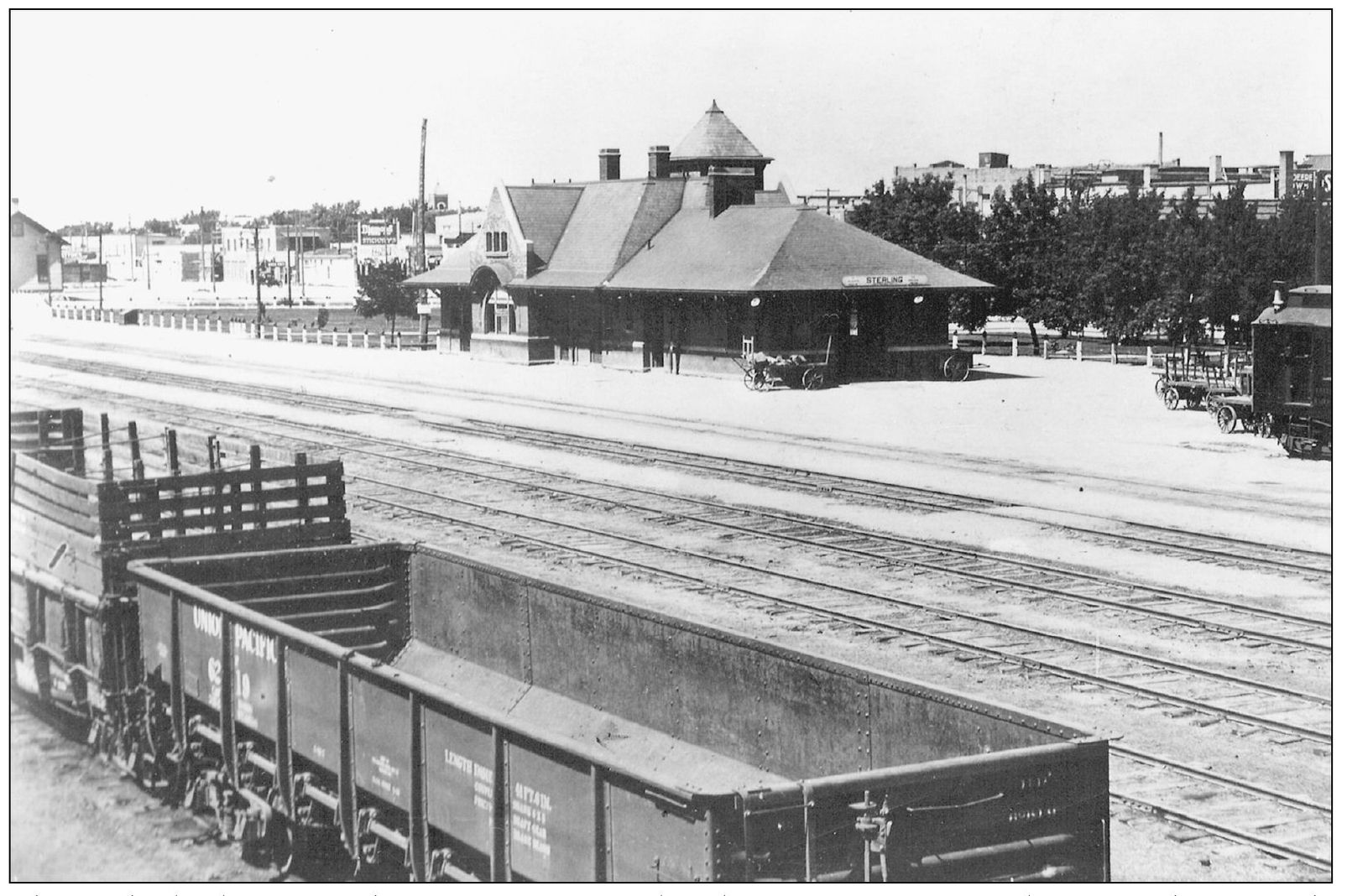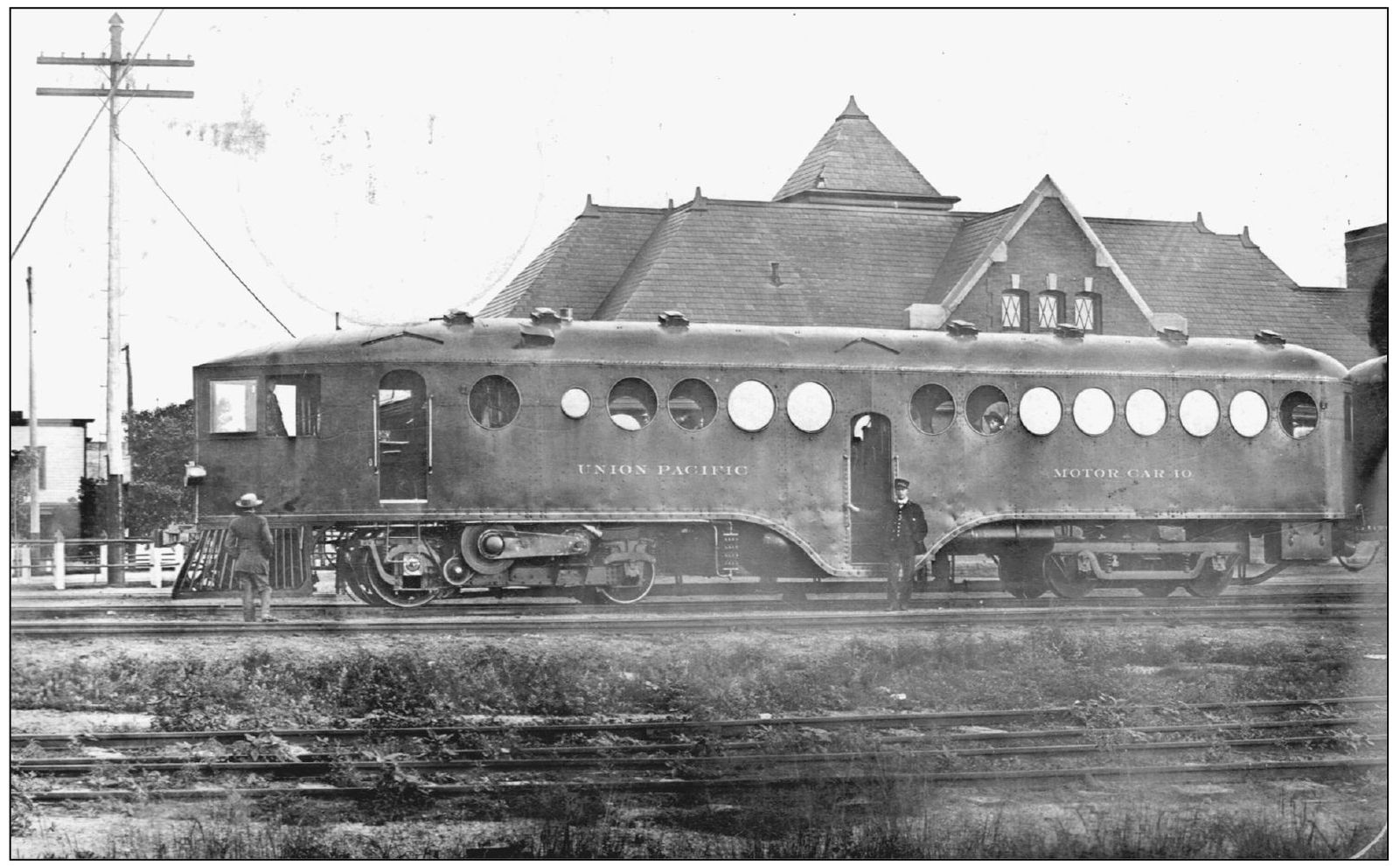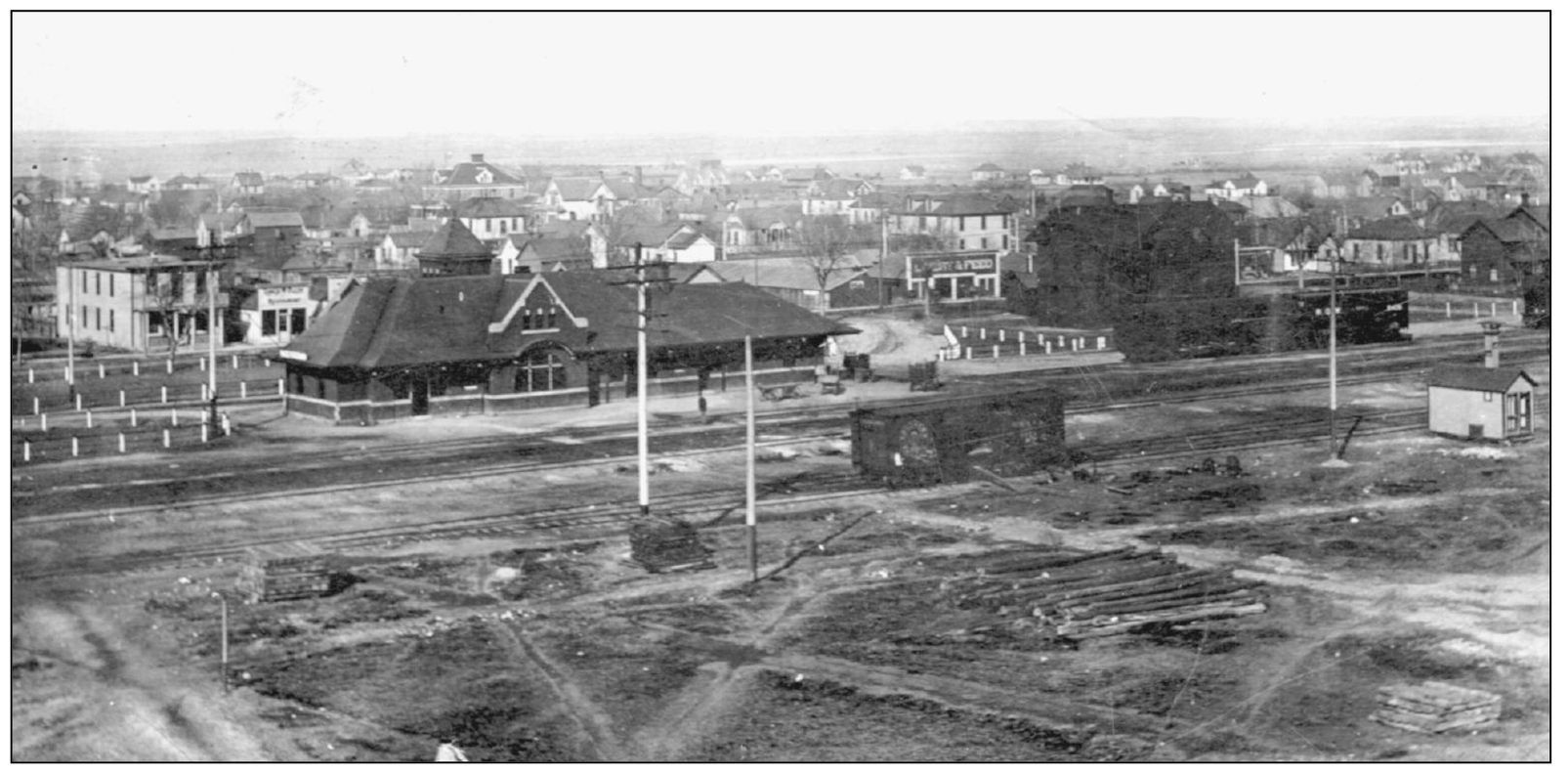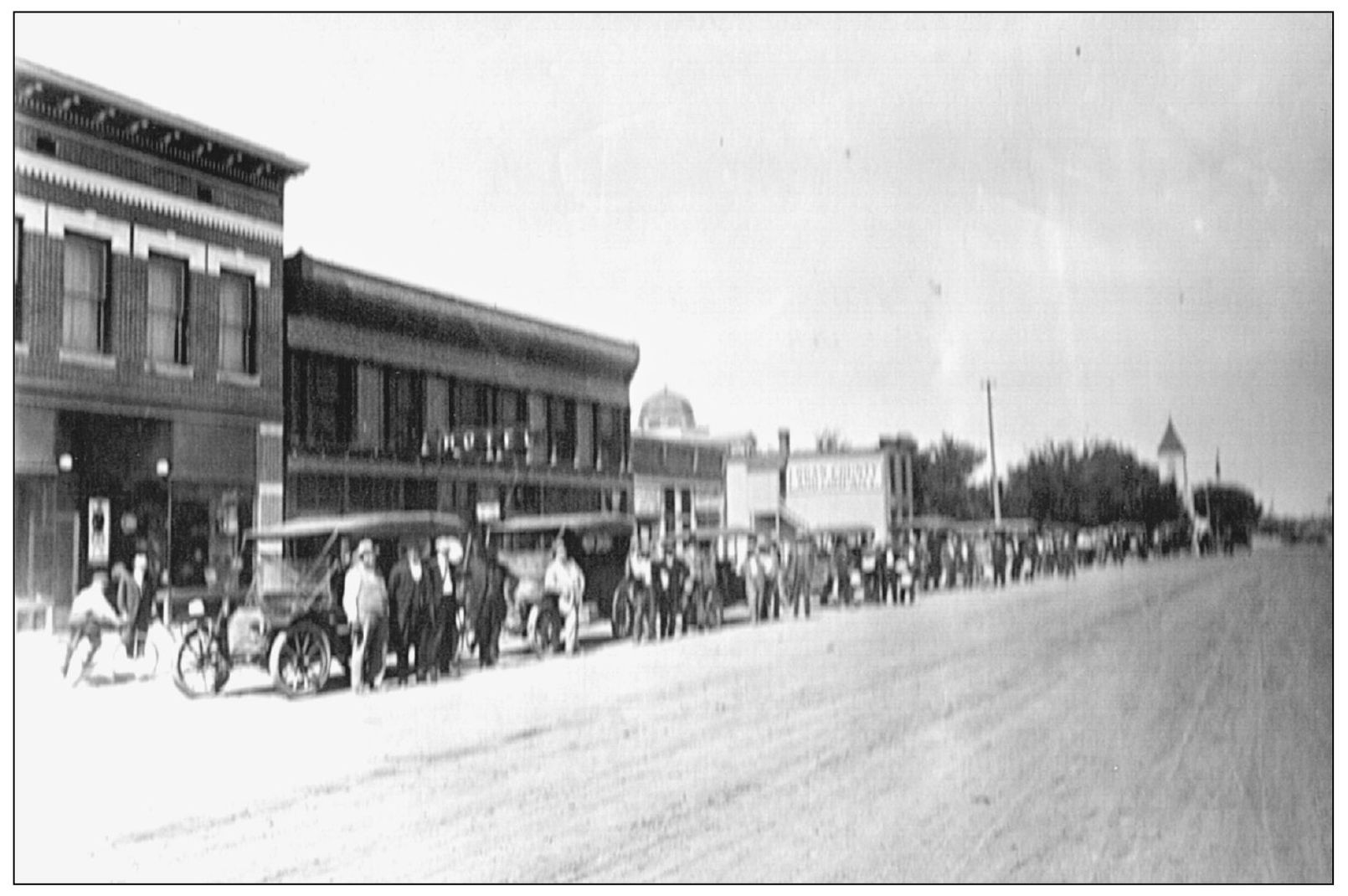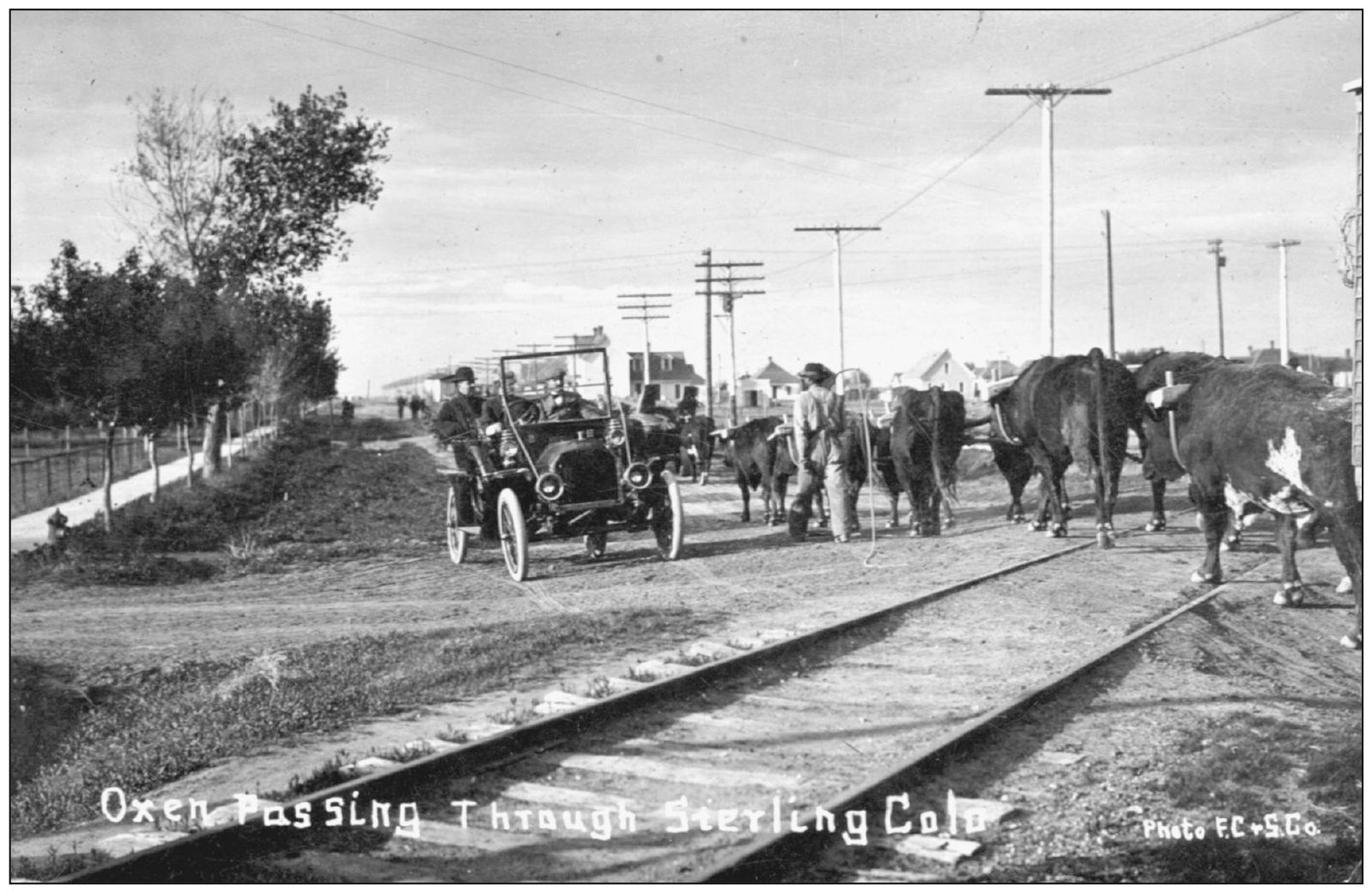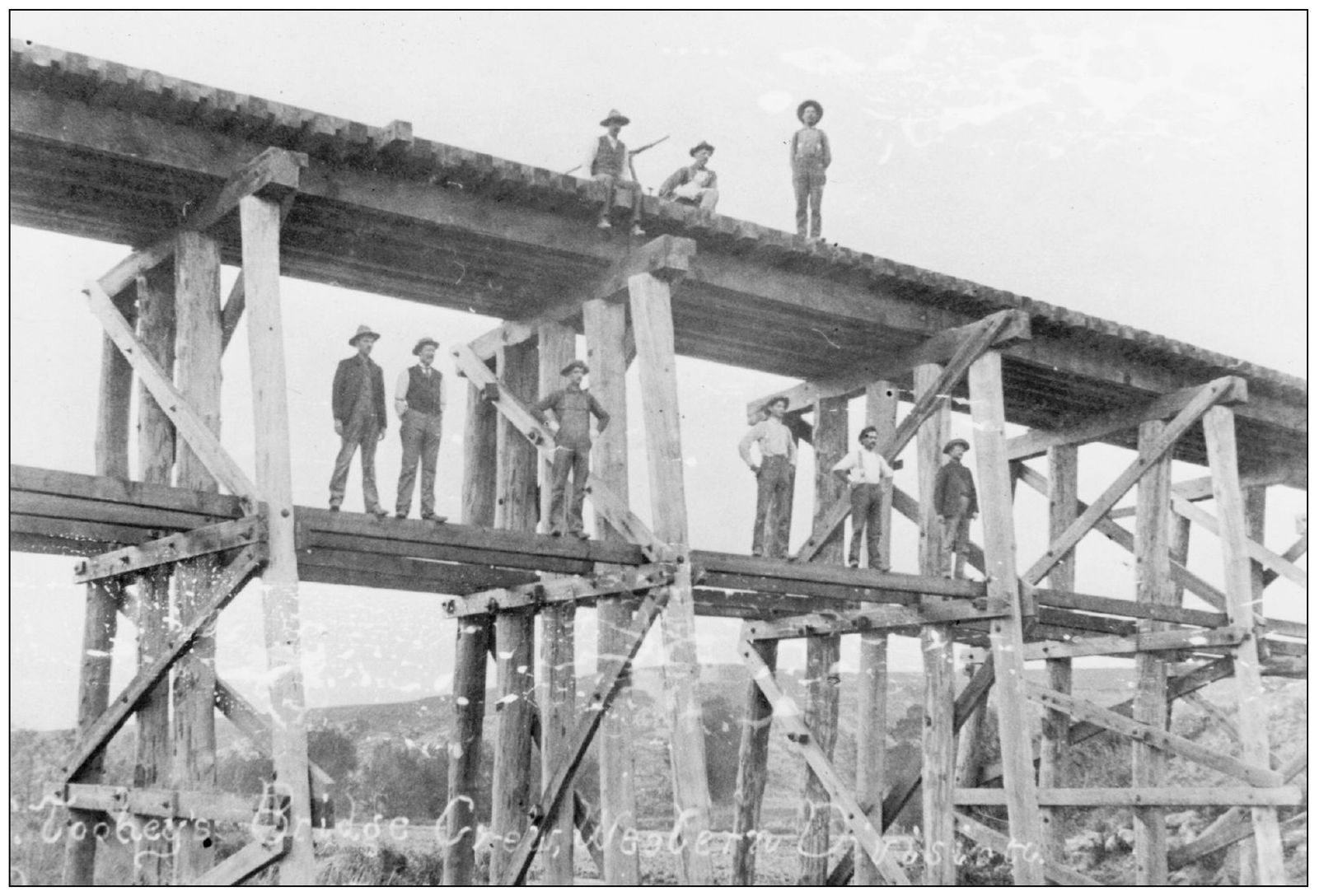One
TRANSPORTATION FROM TRAINS TO PLANES
This photograph of Union Pacific engine No. 2167 was taken May 28, 1955. Steam engines still moved freight on most of the rail lines in the 1950s. (Courtesy Overland Trail Museum.)
This photograph, taken by Terl Robinson and Harold Hoskins on February 22, 1957, shows the Chicago, Burlington, and Quincy Railroad (CB&Q) shops. Also pictured are some of the surrounding businesses and neighborhoods. (Courtesy McCoy/Collman Collection, Overland Trail Museum.)
This photograph shows one of 19 trains that passed through Sterling in 1915 on a daily basis. Part of an old hotel and the Union Pacific depot can also be seen in this photograph. (Courtesy Russell Johnson postcard collection, Overland Trail Museum.)
Pictured are the engine and crew of an early train on the Sterling-Cheyenne line of the Burlington railroad in 1889. This line was one of the silk trains, which carried silk eastward from the West Coast, with porters and other symbols of grandeur. (Courtesy Overland Trail Museum.)
This is the Chicago, Burlington, and Quincy engine No. 6151 in a rail yard. Note how long this train is. It may very well have passed through Sterling, as the area remains busy with freight trains. Many of the trains passing through Sterling are delivering coal from or returning to the coal fields in Wyoming. (Courtesy Overland Trail Museum.)
This is the back view of the Union Pacific railroad station in its original spot on the east side of Front Street in 1922. This view shows several sets of railroad tracks and some open-style cars. Many of the buildings around the Front Street area can also be seen. (Courtesy Overland Trail Museum.)
Dated possibly in the 1940s to 1950s, this front engine of the streamliner railroad car was a Union Pacific engine that went from Denver through Sterling to Chicago. The engine is on the tracks near the Sterling depot. (Courtesy Overland Trail Museum.)
Pictured here is a 1908 photograph of a McKeen motorcar at the depot in Sterling. These engines were built in Omaha, Nebraska, for the Union Pacific Railroad. (Courtesy Russell Johnson.)
This photograph, taken around 1907, shows a view of the Union Pacific depot from the east side. Built in 1903, the depot originally was adjacent to the tracks but was moved west in 1984 to its current site across Front Street from the tracks. It now houses the Logan County Chamber of Commerce. (Courtesy Russell Johnson.)
Countryside tours were an event in the early days of Sterling. In this 1913 photograph, an automobile tour is about to begin from downtown. The hotel in the picture is the current location of Larry Fetzers accounting offices. The building to the right and the open space would become the building where Woolworths was located. The Logan County Land Company was the forerunner of the Gillett Brothers Bank. They built a new structure at the west end of the blockthe Foote Building, which was destroyed by a fire in 2002and this building was razed and replaced by the I and M building, where Herb and Chris Vandemoer have their real estate business. (Courtesy Overland Trail Museum.)
Three forms of transportation converge in this picture from 1909 as an automobile waits to cross while oxen pass over the railroad tracks near Sterling. (Courtesy Russell Johnson.)
This photograph, taken between 1900 and 1904, shows a bridge crew working on a trestle for the Burlington and Missouri Railroad. These men worked under James S. Toohey, who was made roadmaster of the Sterling division in 1906. Toohey worked for the Burlington railroad for 50 years.
Sterlings first automobile was a one-cylinder Oldsmobile with a fuel capacity of two gallons. Owned by Sam Ard, it arrived after two days and two nights of travel from Denver in 1903. Occupants here are Claude Ard (left) and K. C. Sapero, itinerant medico. Ard was known for charging passengers 25 for a ride around a square block. (Courtesy Overland Trail Museum.)

